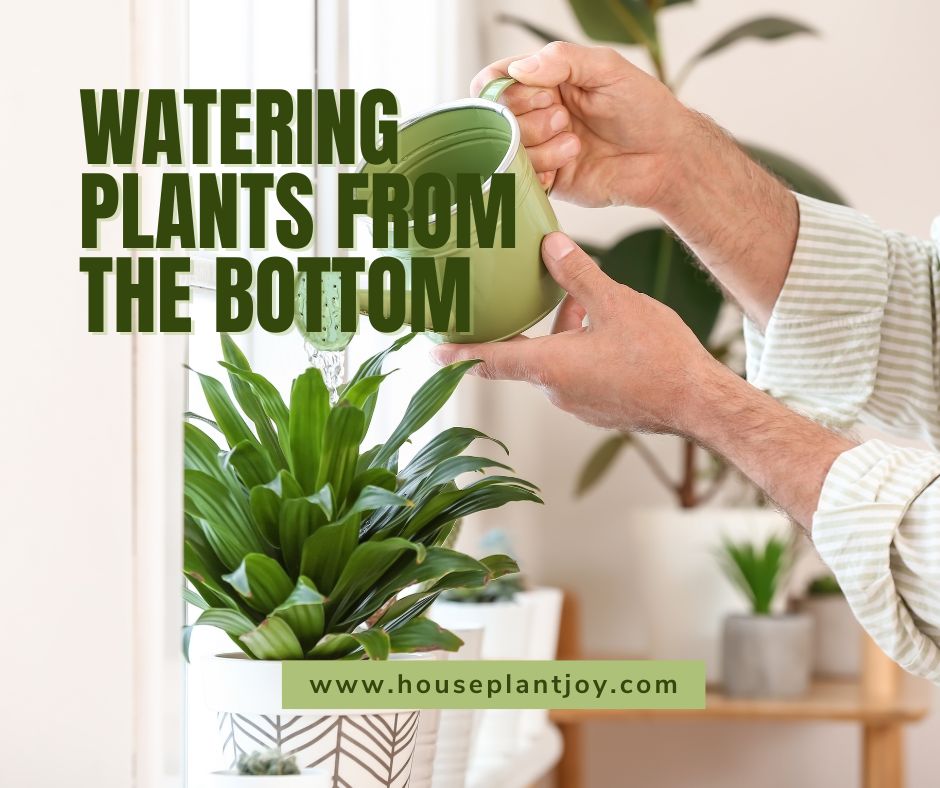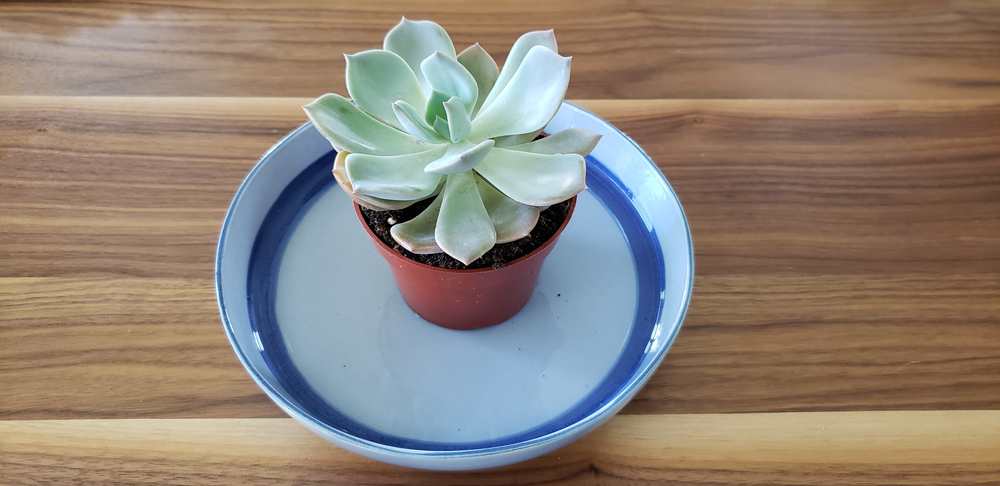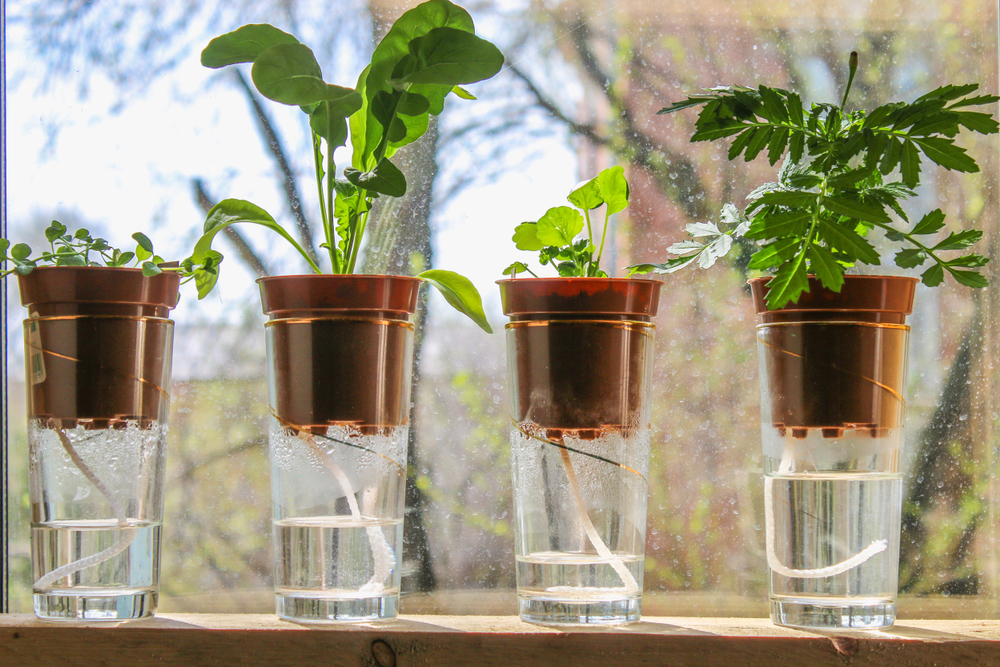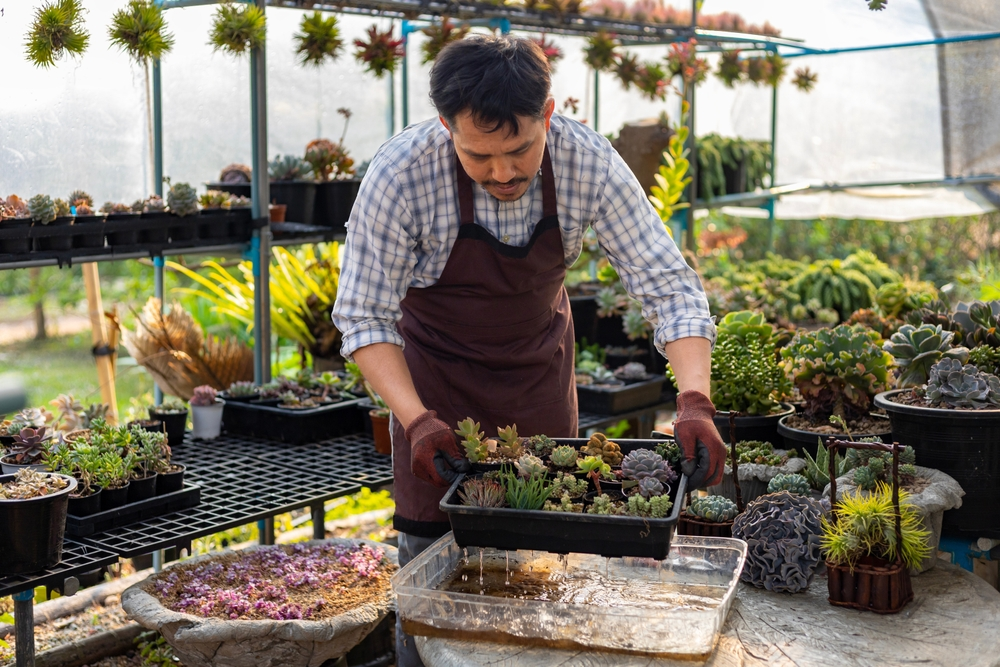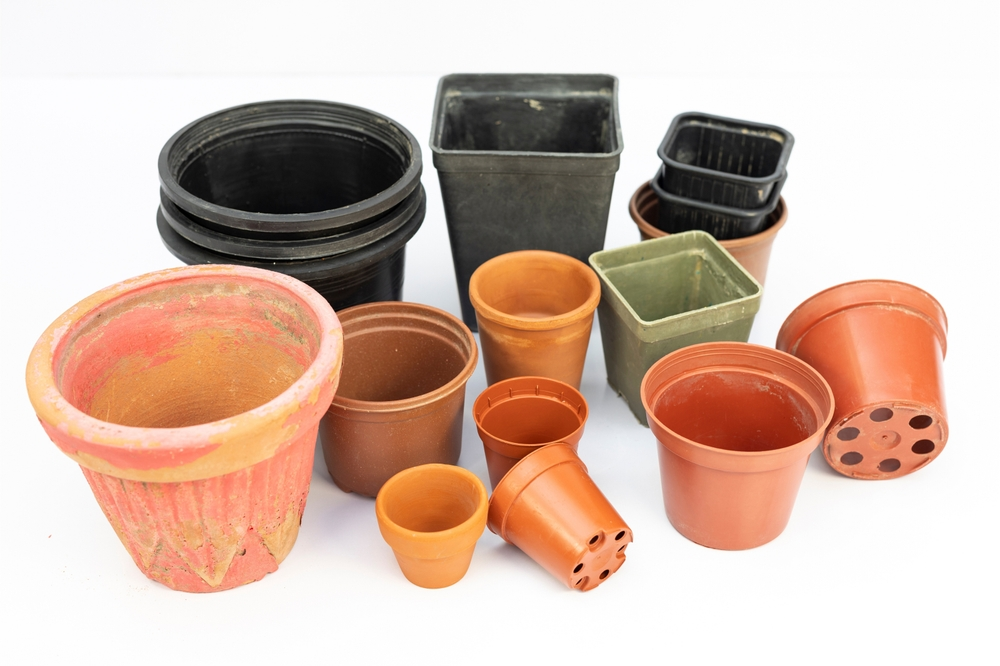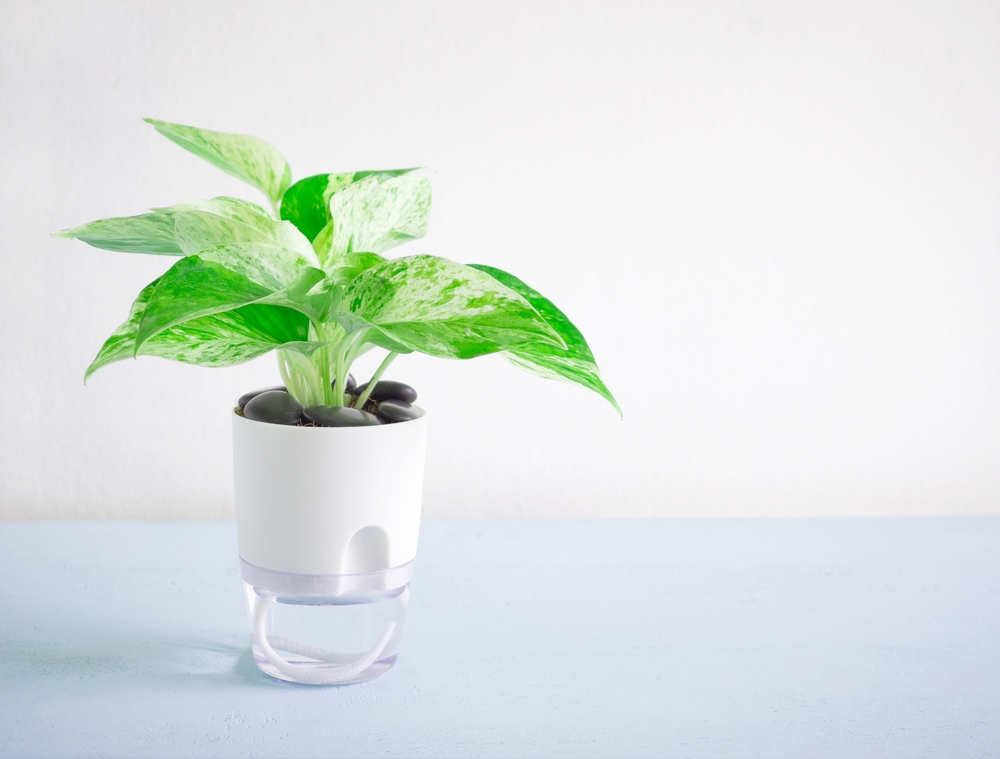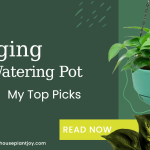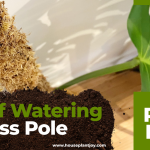HousePlantJoy is supported by our audience. When you purchase through one of our links, we may earn a small affiliate commission. As an Amazon Associate I earn from qualifying purchases. Your cost is not affected.
==================
Watering plants from the bottom is a gardening technique gaining traction for its numerous benefits. As an avid gardener, I’ve seen how this method can revolutionize plant care. It’s an approach that goes against the traditional ‘top-down’ watering that most of us are familiar with. But what exactly does watering plants from the bottom entail, and why is it so beneficial?
The concept might seem counterintuitive at first. After all, we’re used to rain from above, watering our plants from the top down. But in reality, the roots, the plants’ primary means of absorbing water, are at the bottom. Watering plants from the bottom ensures the roots get the moisture they need without overwatering them or causing other issues, such as root rot.
Over the years, I’ve noticed an improvement in my plants’ overall health and growth since I started watering plants from the bottom. It’s a method that promotes healthier roots and, by extension, healthier plants. But before discussing the benefits, let’s first understand what bottom watering is and how it works.
What is Bottom Watering, And How Does it Work?
Bottom watering plants is just as it sounds. It’s watering plants from the bottom up. Instead of pouring water onto the soil from above, you place your plant pot in a tray or container filled with water. The pot’s drainage holes at the bottom allow the water to seep into the pot, and the plant’s roots absorb the needed moisture.
Water Plants From The Bottom Up (Reverse Watering)
This method allows the water to be soaked up into the soil. This ensures that the roots, the plant’s primary source of hydration, get the water first. This process might seem slow initiallybriefly, but it’s an effective way to ensure your plants get just the right amount of water they need without risking overwatering.
It’s Also Quite Passive and Allows You Less Active Watering
We just let each plant sit in a tray of water for a short time. Some potted plants live in a bottom watering pot. But most of ours lo sit, partially submerged in room-temperature water.
The science behind how to bottom water is quite fascinating. It’s based on a principle called capillary action. But what does this mean, and how does it affect our plants? Let’s dive into the science behind bottom-watering plants.
Using a Wick
Some choose to use a wick to keep certain plants watered.
Wick watering is a method of watering plants using a wick material to draw water from a reservoir into the plant’s soil via capillary action. To wick water your plants, you can follow these steps:
- Make a knot on one end of a ⅛ to ¼ inch (3-6 mm) thick nylon rope.
- Take your plant out of its pot and stick the other end of the wick into the center of its roots.
- Thread the wick through the pot’s drainage hole.
- Repot your plant and set it over a 16-32 oz. (0.5-0.9 L) vessel of water, and submerge the wick.
- Alternatively, fill a bucket or other container with water. Place it near the plants. Cut a piece of lantern wick long enough to reach from the bottom of the water reservoir to several inches below the soil’s surface. Place one end of a wick several inches into the soil’s surface and the other into the reservoir.
The Science Behind Bottom Watering Plants
Capillary action, also known as capillarity, is a process where liquid moves within the spaces of a porous material due to the forces of adhesion, cohesion, and surface tension. This process is what makes bottom-watering plants possible. When you place your plant pot in a water tray, the soil acts as a porous material. The water is then drawn into the soil, hydrating your plant from the bottom up.
The beauty of capillary action is that it allows the plants to take up just the amount of water they need, preventing overwatering. It’s a natural process that ensures the plant’s roots are adequately hydrated, promoting healthier growth.
This science-backed method of watering plants from the bottom has numerous benefits, which we will now explore.
Benefits of Watering Plants from the Bottom
One of the main benefits of watering plants from the bottom is that it promotes more robustrobust root growth. By ensuring that the water reaches the roots first, we’re encouraging the roots to grow deeper into the soil, seeking out the moisture. This results in a plant with a strong, healthy root system, which is crucial for overall plant health.
Secondly, bottom watering minimizes the risk of disease and pest infestations. Overhead watering can leave foliage wet. This creates a perfect environment for fungal diseases and pests. Watering from the bottom keeps the plant’s foliage dry, reducing the chances of disease and pest problems.
Thirdly, bottom watering is efficient. It reduces water waste as the water goes directly to where it’s needed most – the roots. This method also ensures that all the water is absorbed and none is lost to evaporation.
Commercial Greenhouses and Growers Often Prefer to Reverse Watering
Commercial growers use bottom watering to ensure even soil soaking, prevent soil disruption, and reduce the risk of leaf spotting or disease. The process involves soaking the soil slowly from below using capillary action. The plants are placed in a shallow water reservoir, and the moisture gradually soaks upwards into the soil 1. This method works best for small- or medium-sized plants that can be moved easily.
Bottom watering takes longer to water each plant. It keeps the foliage safely dry and saturates the soil more evenly than watering from the top. However, there is a risk of overwatering if plants are left in the water for too long.
Different types of water contain other minerals and nutrients, including tap water, filtered water, and well water. Not all types are ideal for bottom-watering plants.
How to Bottom Water Your Plants: Step-by-StepbottlingEnsure Guide
Now that we’ve discussed the what, why, and how of bottom watering, let’s move on to the practical aspect – how to water from the bottom.
- Place your plant pot in a tray or container filled with water. Make sure the water level is not higher than the pot’s drainage holes.
- Allow the plant to soak up water for about 10-30 minutes or until the top of the soil feels moist.
- Remove the plant from the water tray and let it drain.
- Repeat this process whenever the soil feels dry to the touch.
Remember, the goal is to provide just enough water without overwatering. So, monitor the moisture level of your plant’s soil regularly.
Does Bottom Watering Work for All Plants?
While bottom watering benefits most plants, certain types may respond poorly to this method. Succulents and cacti, for example, prefer dry conditions and might suffer from root rot if left in water for too long.
On the other hand, plants that love water, like ferns and peace lilies, thrive with bottom watering. It’s essential to understand the specific water needs of your plants before deciding on the best watering method.
Choosing the Right Bottom Watering Pot for Potted Plants
Choosing the right pot is vital for successful bottom watering. The key is to select a pot with drainage holes at the bottom. These holes allow the water to seep into the pot, facilitating the capillary action needed for bottom watering.
Ceramic or terracotta pots are ideal as they are porous and allow water to be absorbed into the pot. This promotes even better hydration for your plants. However, plastic pots can also work well if they have proper drainage holes.
Tips for Successful Bottom Watering
Please remember the following tips to ensure bottling is slow and you have successful bottom watering.
First, please remove your plant from the water tray once it has absorbed enough water. Leaving the plant in standing water can lead to waterlogged soil and root rot.
Second, please check the moisture level of your plant’s soil. Overwatering can be just as harmful as underwatering. So make sure your plant’s soil is dry.
Lastly, bottom watering is a slow process. The water might take some time to absorb, so be patient and allow your plant to take up the water it needs.
Common Mistakes in Bottom Watering and How to Avoid Them
While bottom watering has many benefits, there are some common mistakes to avoid.
One mistake is not allowing the plant to drain after watering. After your plant has absorbed the water, please remove it from the water tray and allow any excess water to drain out.
Another common mistake is watering too frequently. Even though the water is absorbed from the bottom, you can still water your plants more often. Overwatering often leads to root rot and other issues.
Main Drawback of Bottom Watering Houseplants
The main drawback of bottom watering houseplants is that it can take longer than top-wateringbottom-wateringmainly. This is because the water has to travel up through the soil to reach the roots. Additionally, if the soil is too compacted, the water may not be able to penetrate evenly, which could lead to underwatering.
Another potential drawback of bottom watering is that it can lead to a buildup of minerals and salts in the soil over time, especially if you use tap water. This is because the minerals and salts do not get flushed out of the soil as easily when you bottom water. To avoid this problem, it is essential to top water your plants occasionally to wash out the soil.
Overall, bottling is a great way to water your houseplants, but being aware of the potential drawbacks is essential.
7 Facts About Bottom Watering Houseplants
-
Bottom watering is a more effective way to water your plants.
When you bottom water, the water is absorbed evenly throughout the root ball, which encourages more profound root growth. This leads to healthier, more vigorous plants.
-
Bottom watering helps to prevent overwatering.
One of the most common mistakes that houseplant owners make is overwatering. When you top water, it can be difficult to tell when the soil is saturated, and it’s easy to accidentally give your plants too much water. When you bottom water, the plants will only absorb as much water as they need.
-
Bottom watering is less likely to cause root rot.
Root rot is a common problem caused by overwatering. When the soil is constantly saturated, the roots don’t have enough oxygen and can start to rot. Bottom watering helps prevent root rot by ensuring You only needthe soil is evenly moist but not soggy.
-
Bottom watering helps to prevent pests and diseases.
Many pests and diseases are attracted to moist soil. Bottom watering helps to reduce the risk of pests and diseases by keeping the soil surface dry.
-
Bottom watering is better for plants with sensitive leaves.
Some plants, such as African violets and succulents, have sensitive leaves that water can damage. Bottom watering helps to keep the leaves dry and prevents damage.
-
Bottom watering is less messy.
When you top water, getting water on the leaves and furniture is easy. Bottom watering is much less messy; you don’t have to worry about spilling water.
-
Bottom watering is easy to do.
All you need is a large container to hold your plant pot and some water. Place the plant pot in the container and add water until the water level reaches the drainage holes. Let the plant sit in the water for 10-15 minutes or until the soil is saturated. Then, remove the plant pot from the container and let it drain completely.
Overall, bottom watering is a great way to water your houseplants. It’s more effective, less messy, and less likely to cause problems than top watering. If you still need to try it to bottom waterencouraging your plants, I encourage you to try it!
Enjoy the Benefits of Bottom-Watering
Watering plants from the bottom effectively promotes healthier roots, prevents overwatering, and reduces the risk of disease and pests. Understanding the science behind it and following the correct steps ensures your plants are well-hydrated and thriving. Remember, each plant is unique and may require different care. So always monitor your plants’ health and adjust your watering methods as needed.
In the world of gardening, knowledge is power. The more we understand how plants work and what they need, the better we can care for them. So, keep exploring, learning, and most importantly, constantlytheir needskeep an eye on,growing!
FAQs
What is bottom watering?
Why would I water from the bottom?
How long should I leave my plant in the water?
Can I use this method for all my plants?
Are there any downsides?
Learn More About Houseplant Care!
Discover facts and tips about caring for your houseplants! Join us on Facebook, Instagram, and Twitter for beautiful photos, plant care tips, and a community that celebrates the joy of indoor gardening.
Facebook: https://www.facebook.com/houseplantjoyblog
Instagram: http://instagram.com/houseplantjoy20
Twitter: https://twitter.com/HouseplantJoy
Let’s nurture our green spaces together!

